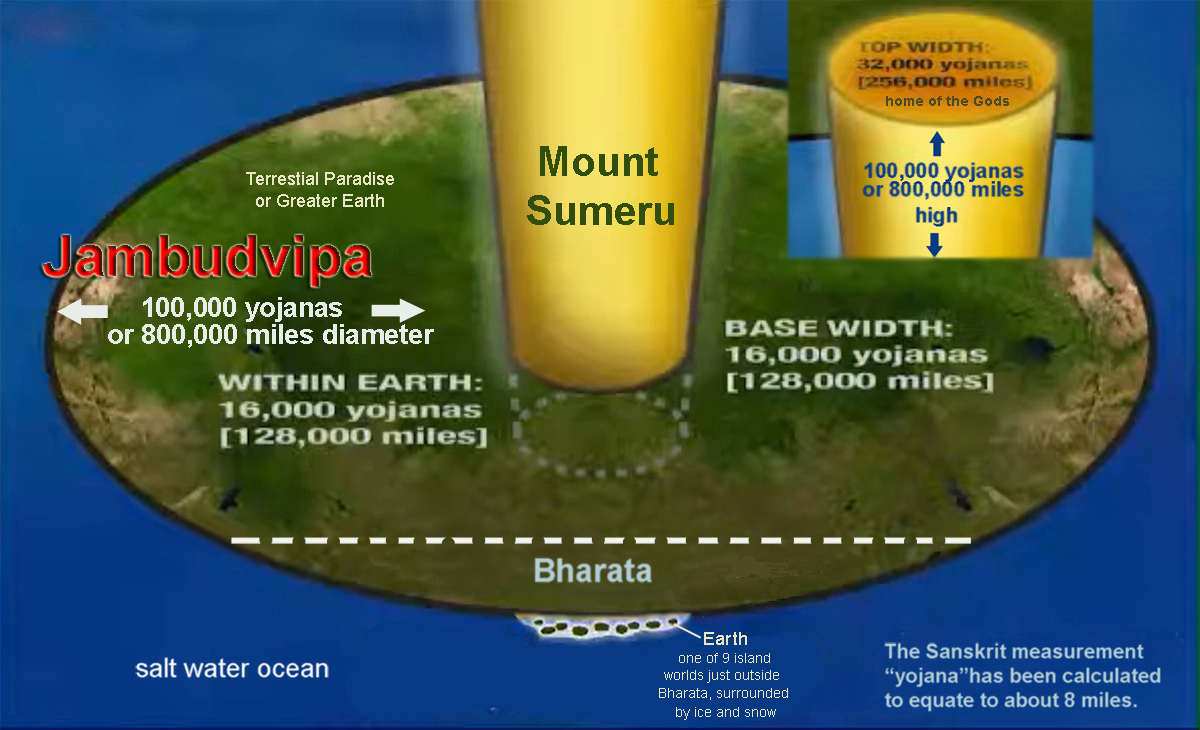
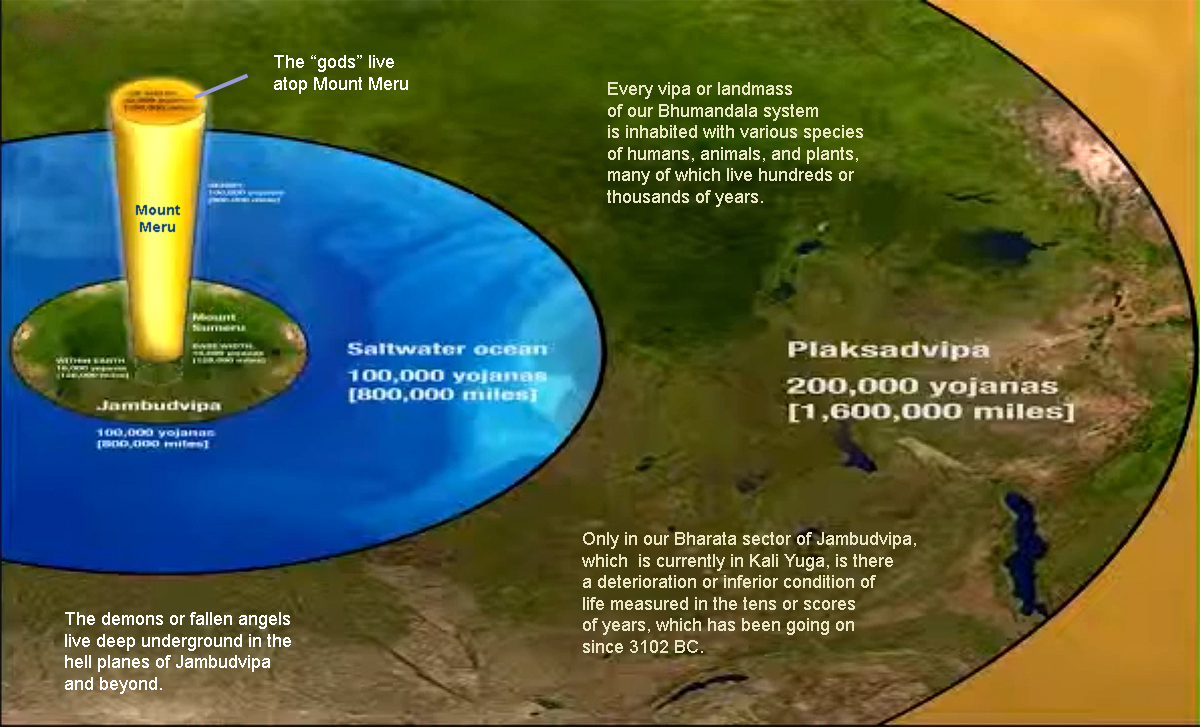
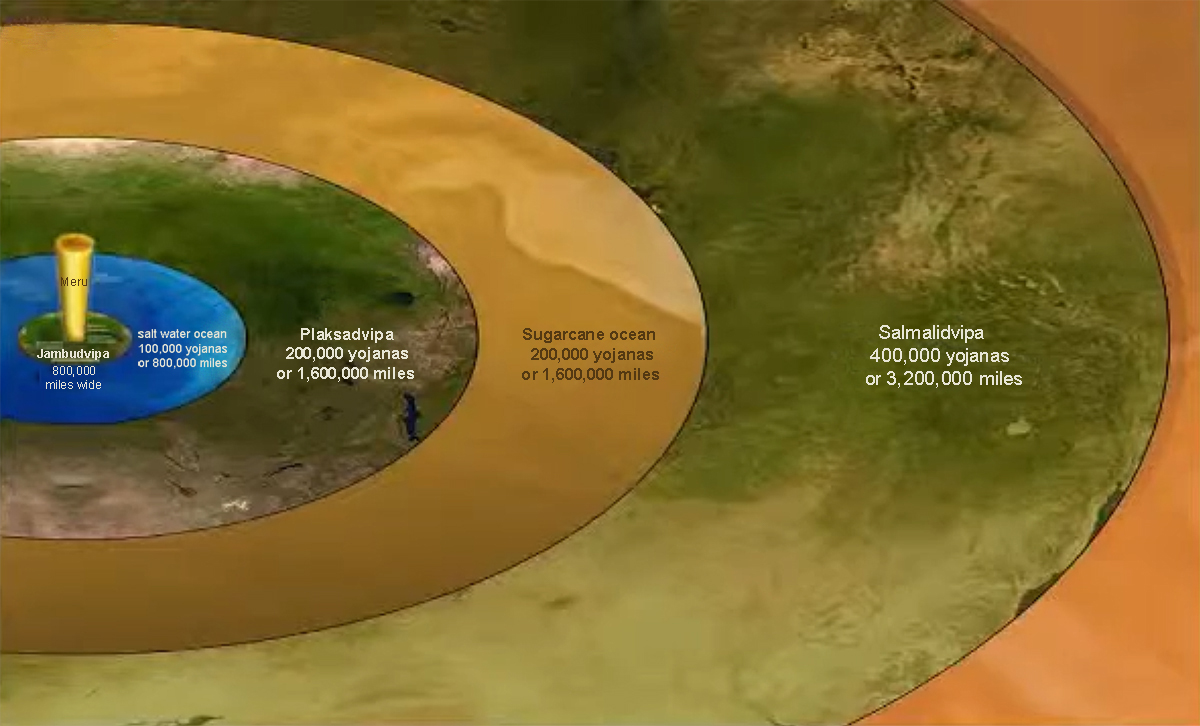
|
This is speculation on my part, but what if each dvipa or land ring which is 2 times larger than the previous one, also holds life
that is 2 times larger and longer lived. It makes sense and would explain the various heights of peoples or giants, many of which would cross over
into other rings. Also, not all the rings may be solid through and through, but may consist of broken tracts of land or "continents" loosely arranged
into a ring.
|
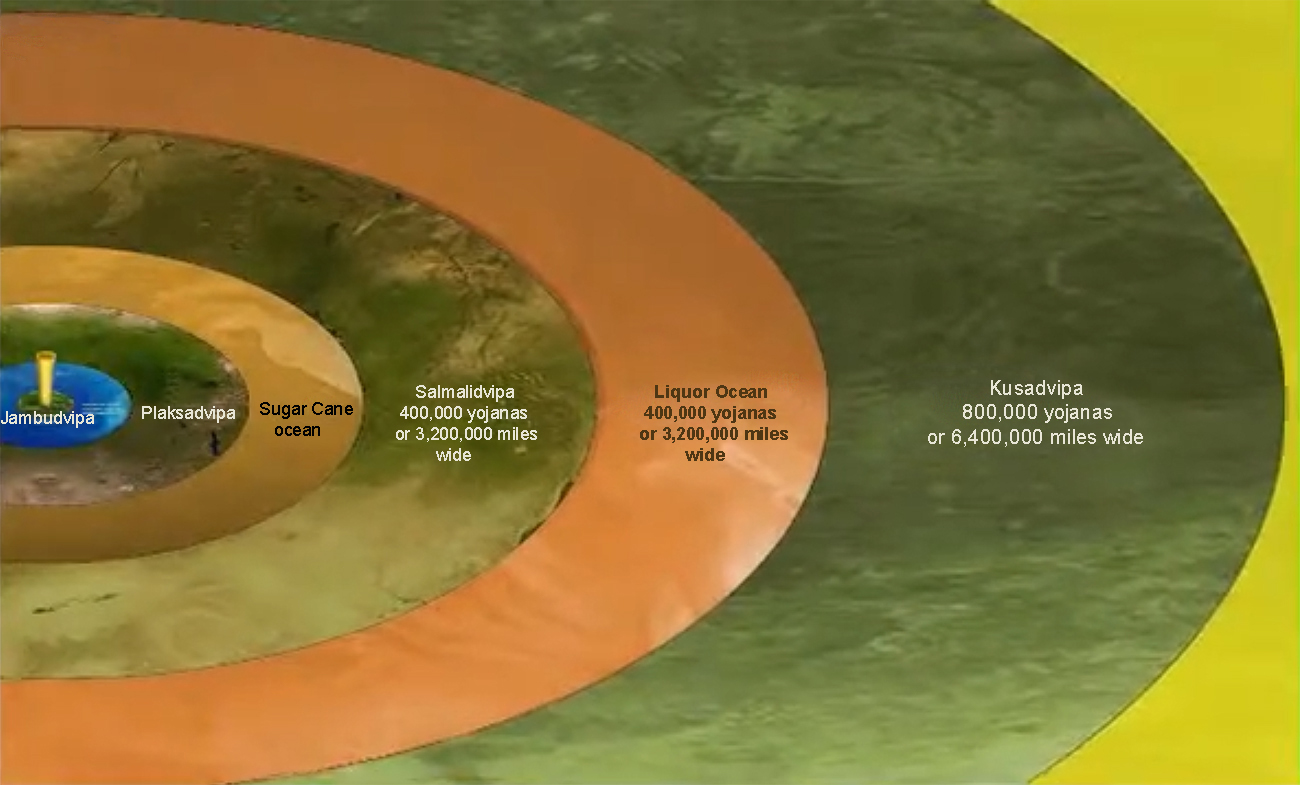
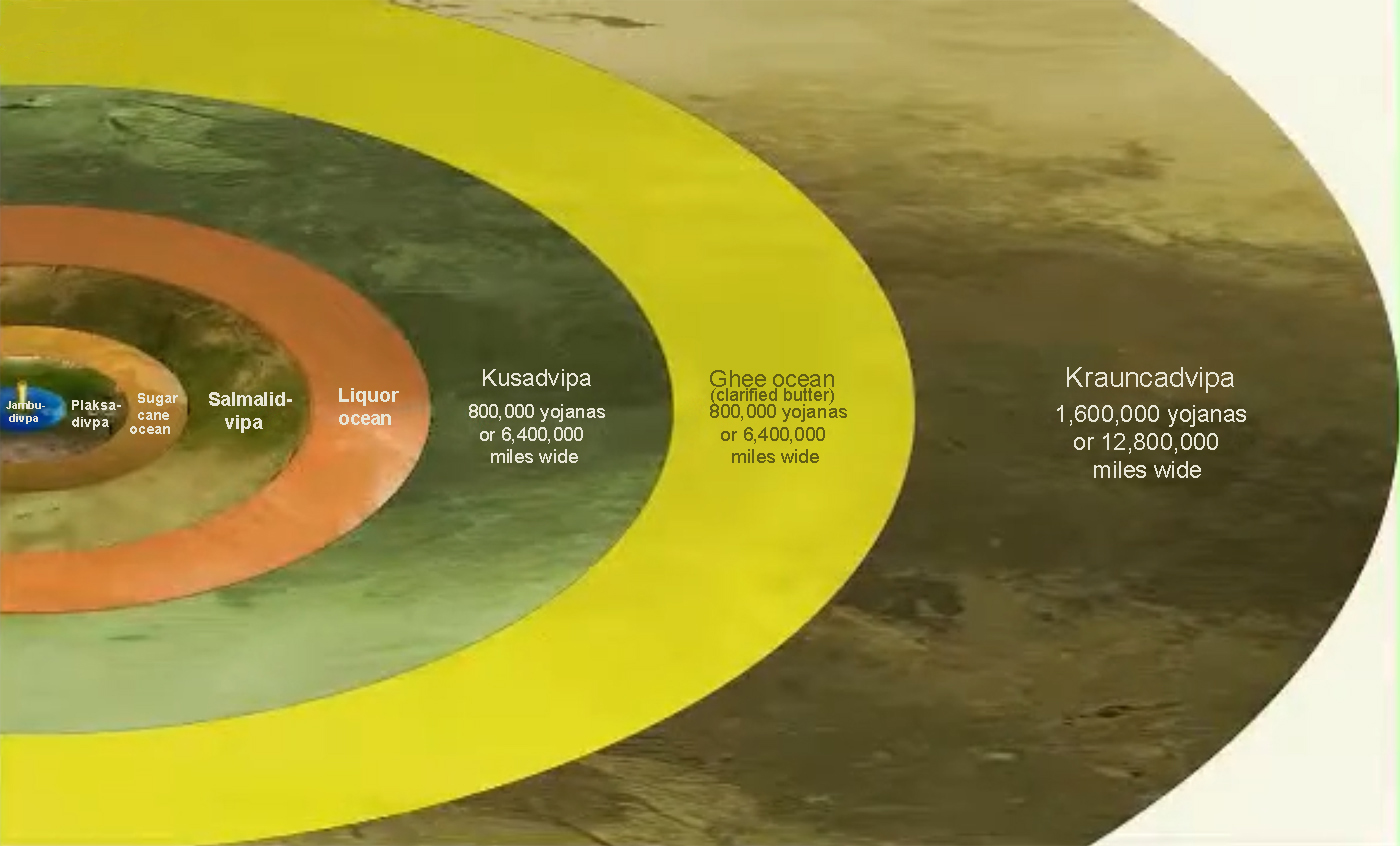
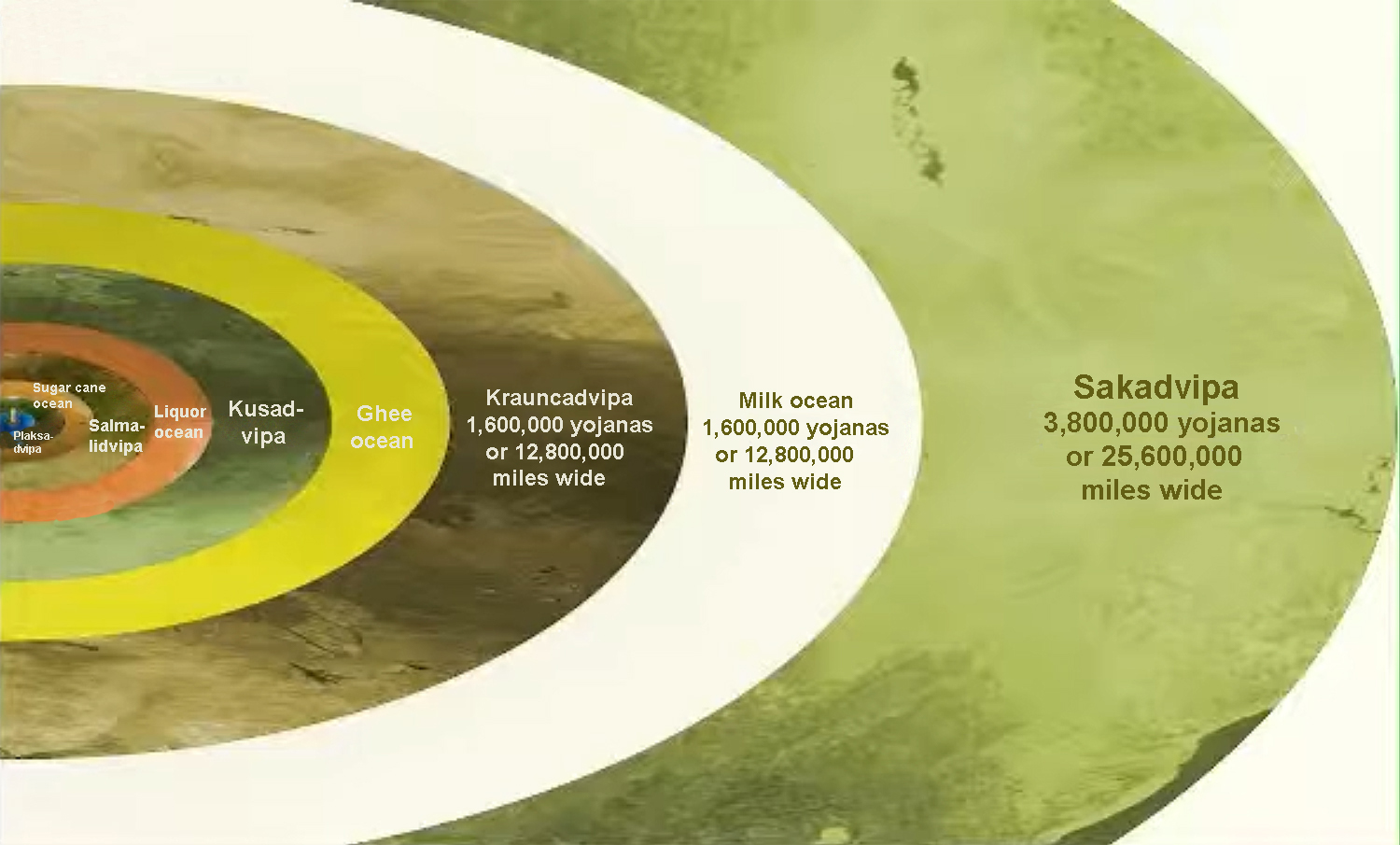
|
Are the oceans of Bhumandala really made of salt, and sugarcane, and liquor, and butter, and milk, and yogurt, and sweetness? This seems
like fantasy or fairy tale, yet there is the real possibility of such being the case. Many of these waters are not only delicious, but healing and spiritually
uplifting. They are the nectars of the gods, created and maintained by the gods, and lucky and blessed is he or she who is able to partake of them.
|
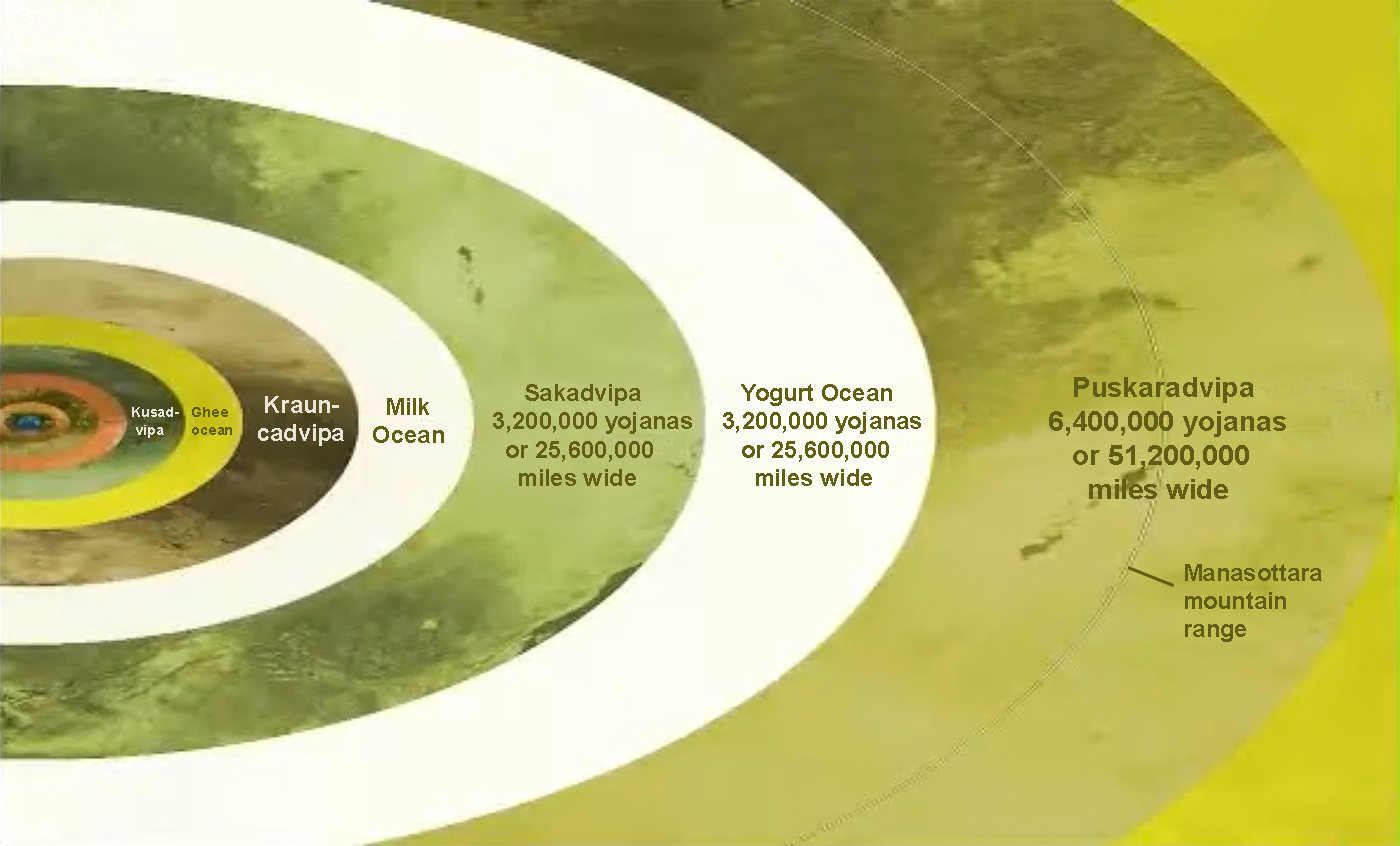
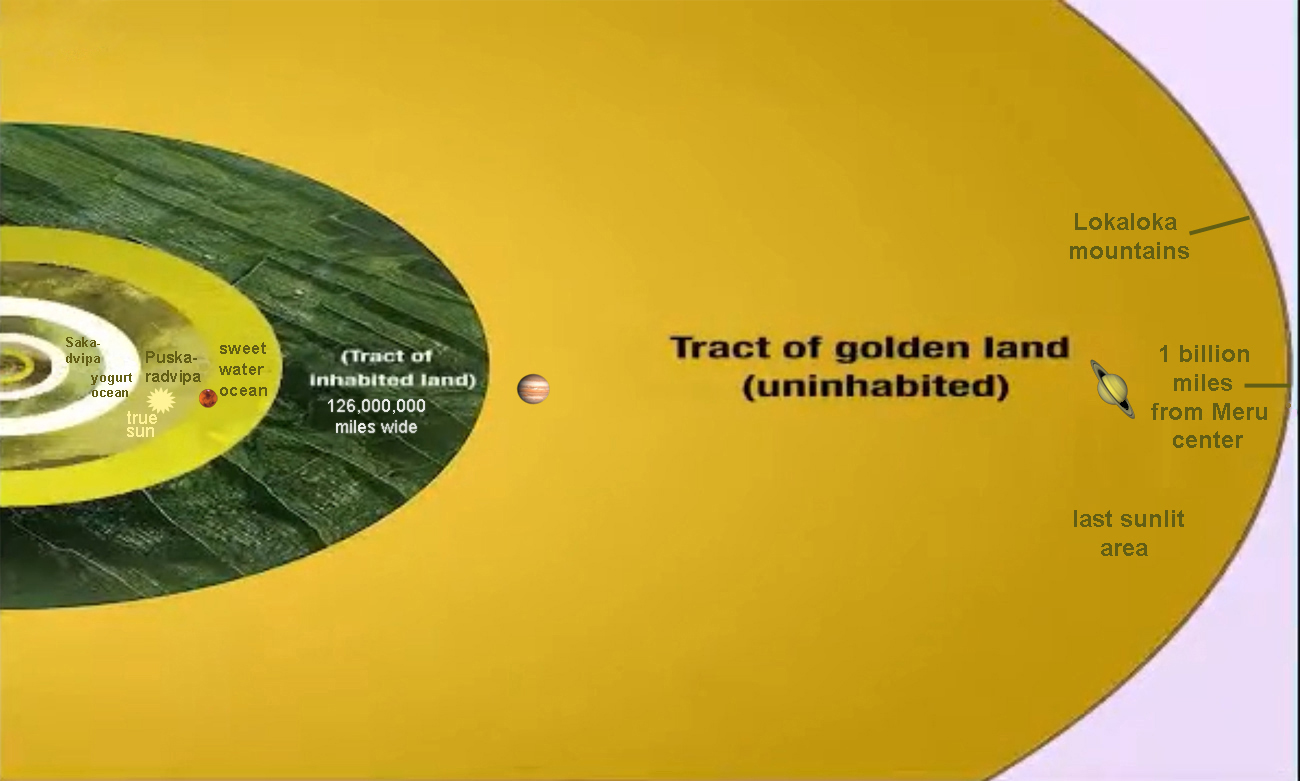
|
The Golden Land was once inhabited but no longer. Perhaps they all migrated to the Inhabited Land after some reason or another. Thompson tries
to fit the various planets of our modern solar system within the Bhumandala framework. The True Sun, which is as large as Jambudvipa itself, skirts the Manasottara
mountain range in the middle of Puskaradvipa, with Mercury and Venus not far behind. Mars is just outside the Puskaradvidpa region. The asteroids equate with
the Inhabited Land, Jupiter is in the early part of the Golden Land, and Saturn, is within the late part of the Golden Land, just before the Lokaloka mountains.
Chiron coincides with the Lokaloka mountains which are so wide and high they block out any light coming from our True Sun(the Sun we see is just a dome reflection
of this) to the outermost parts of Bhumandala. Uranus is just inside the outer border of Aloka Varsa region, and Neptune and Pluto must be further out.
|
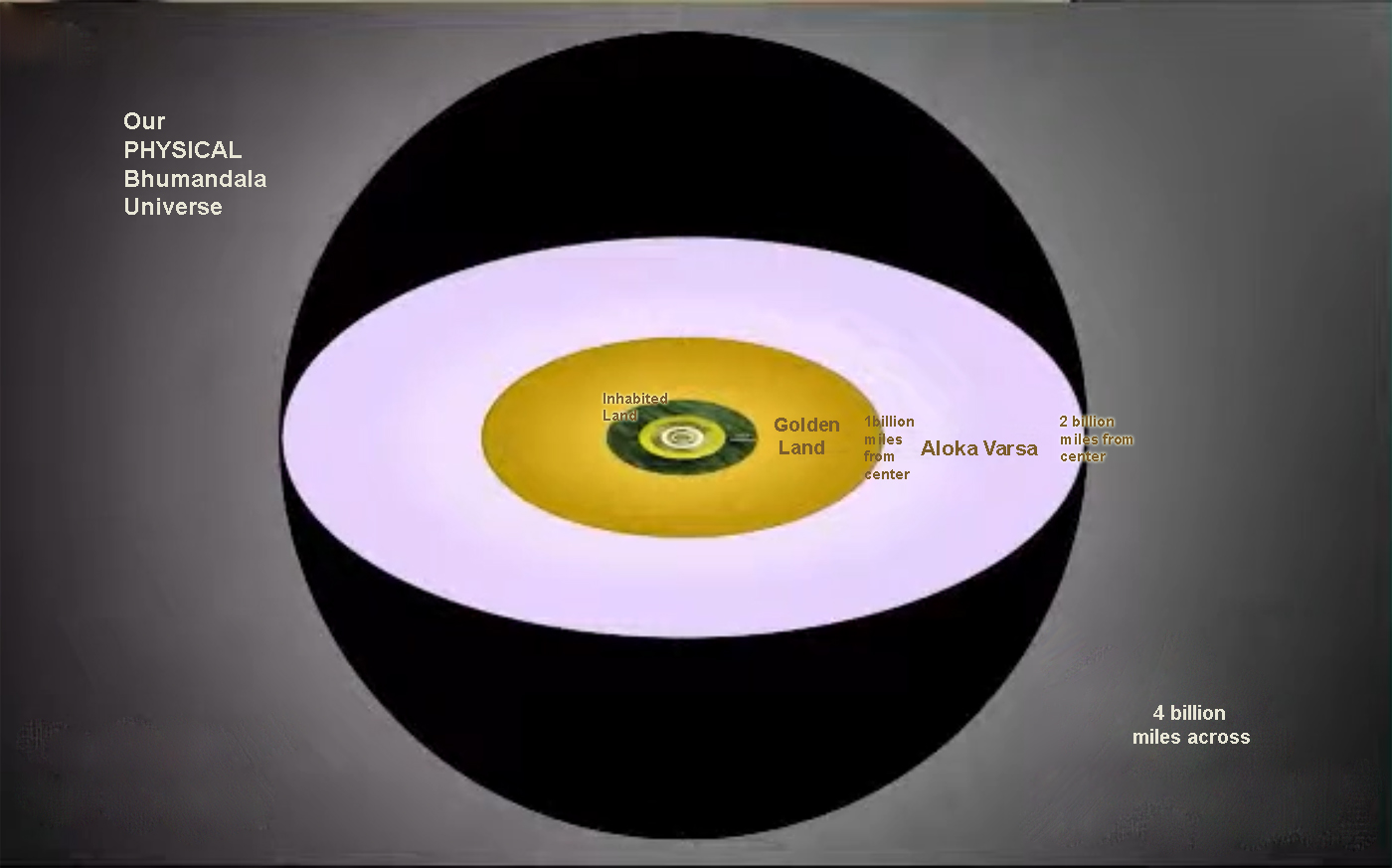
|
Our Bhumandala Universe has 7 coverings each ten times successively larger than the former.
The first four are according to the elements followed by ether which is the basis or origin of all the elements,
followed by two supra elements, ego and mahat-tattva.
|
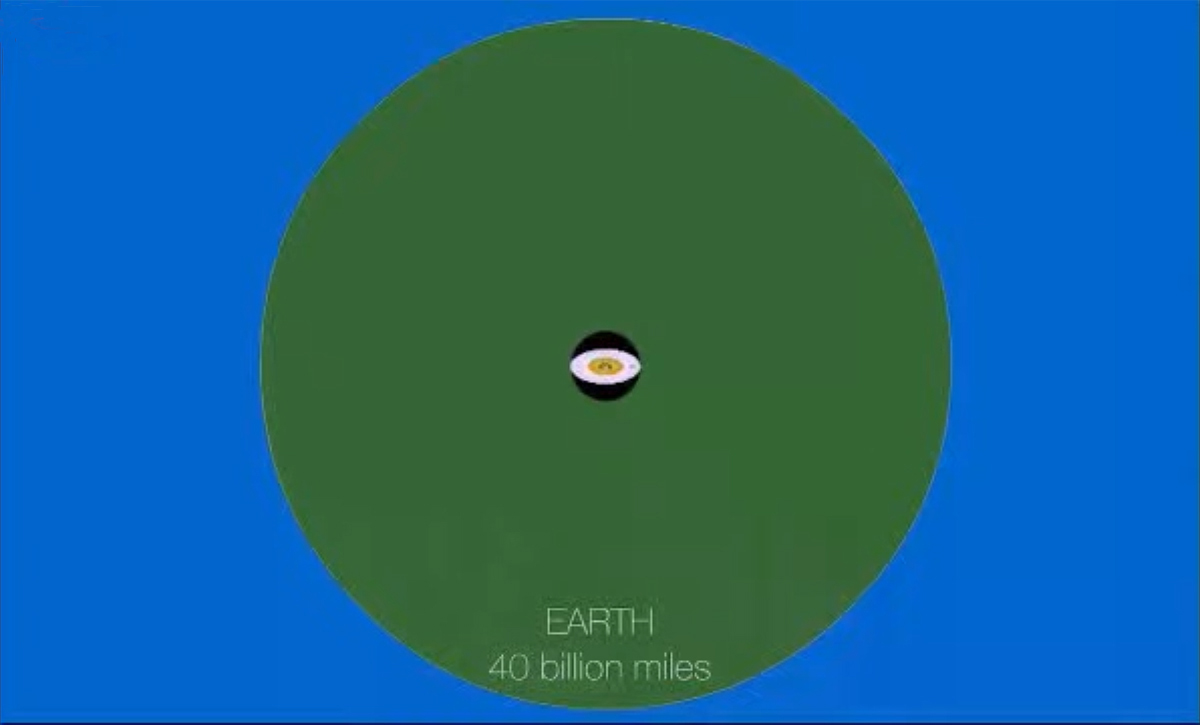
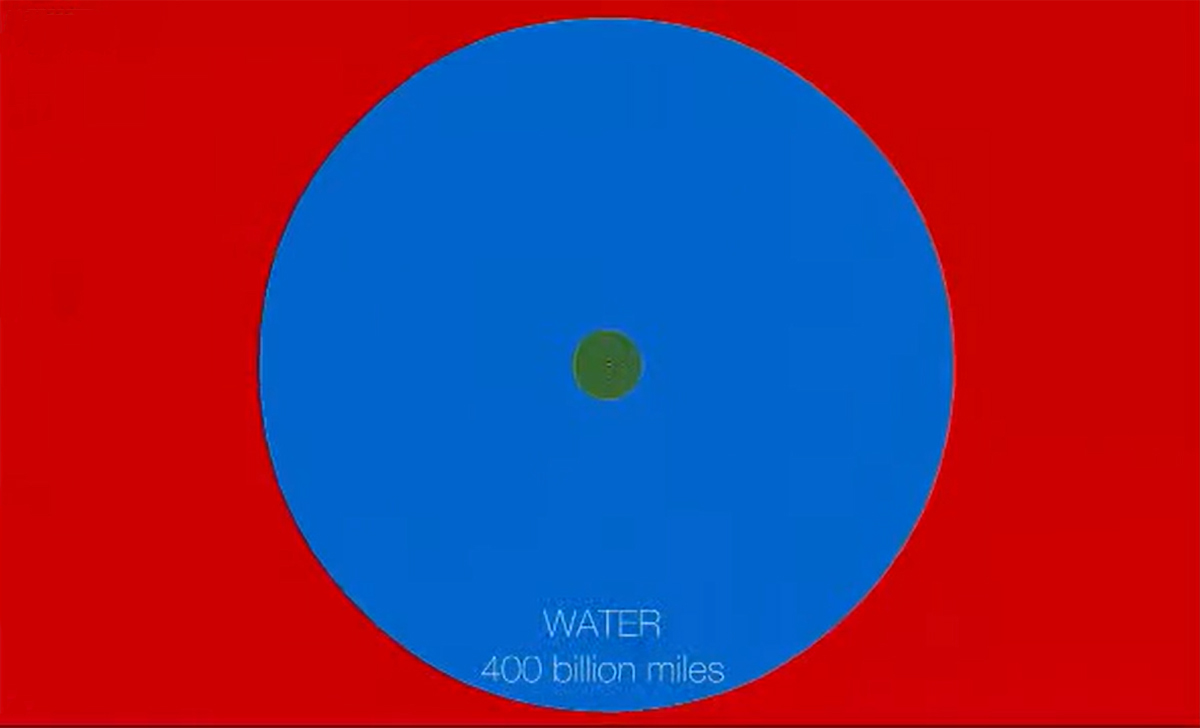
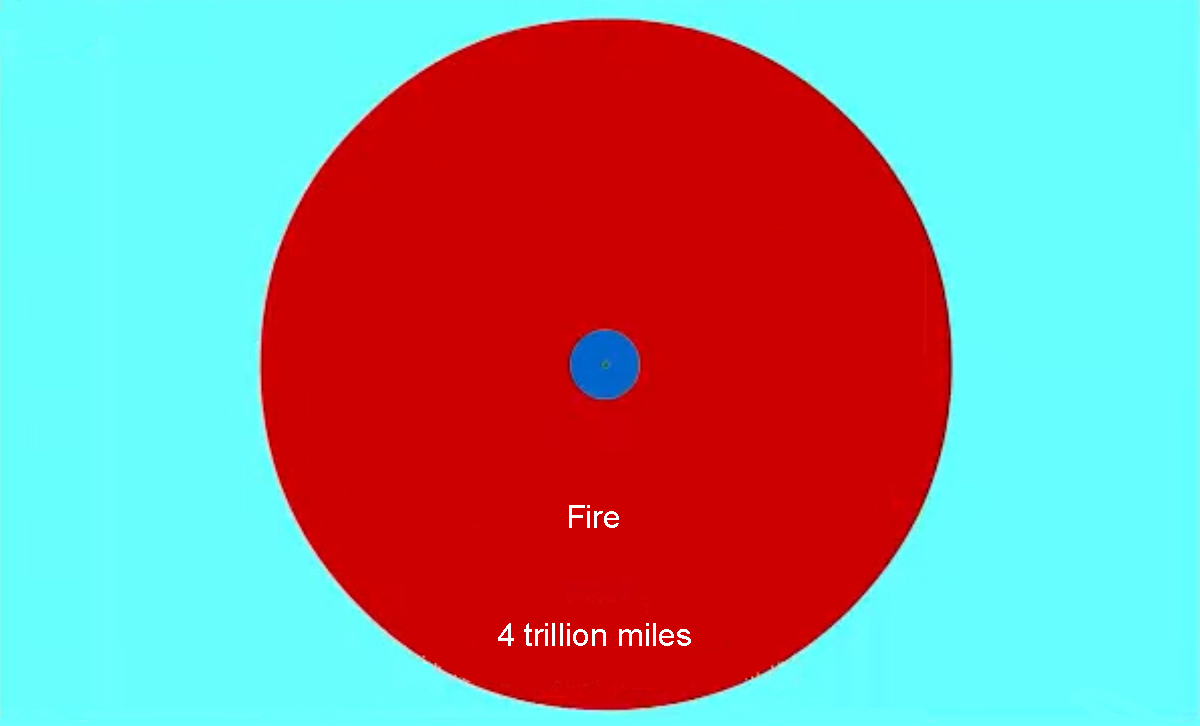
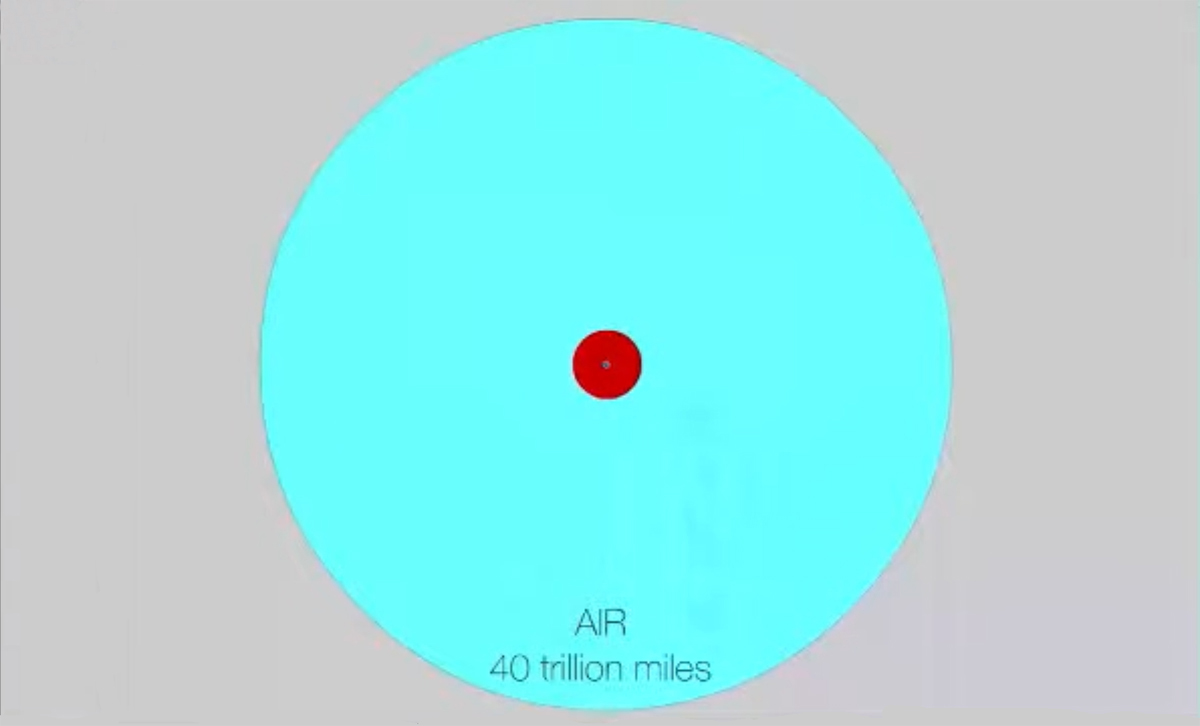
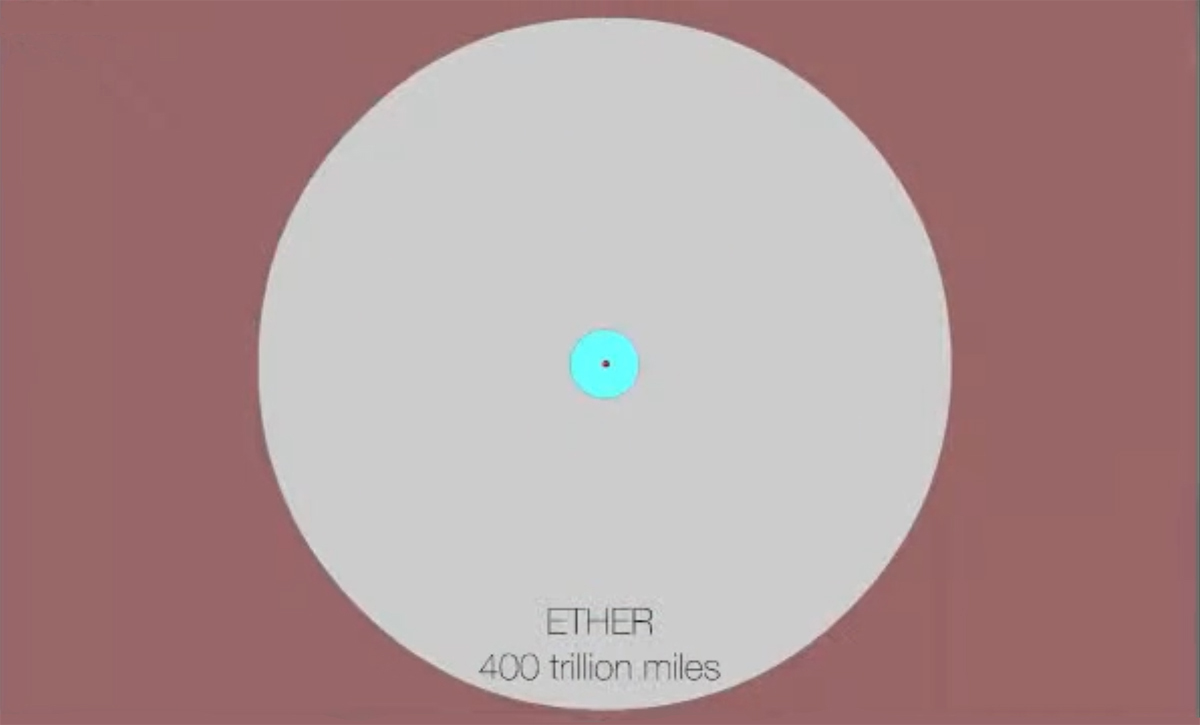
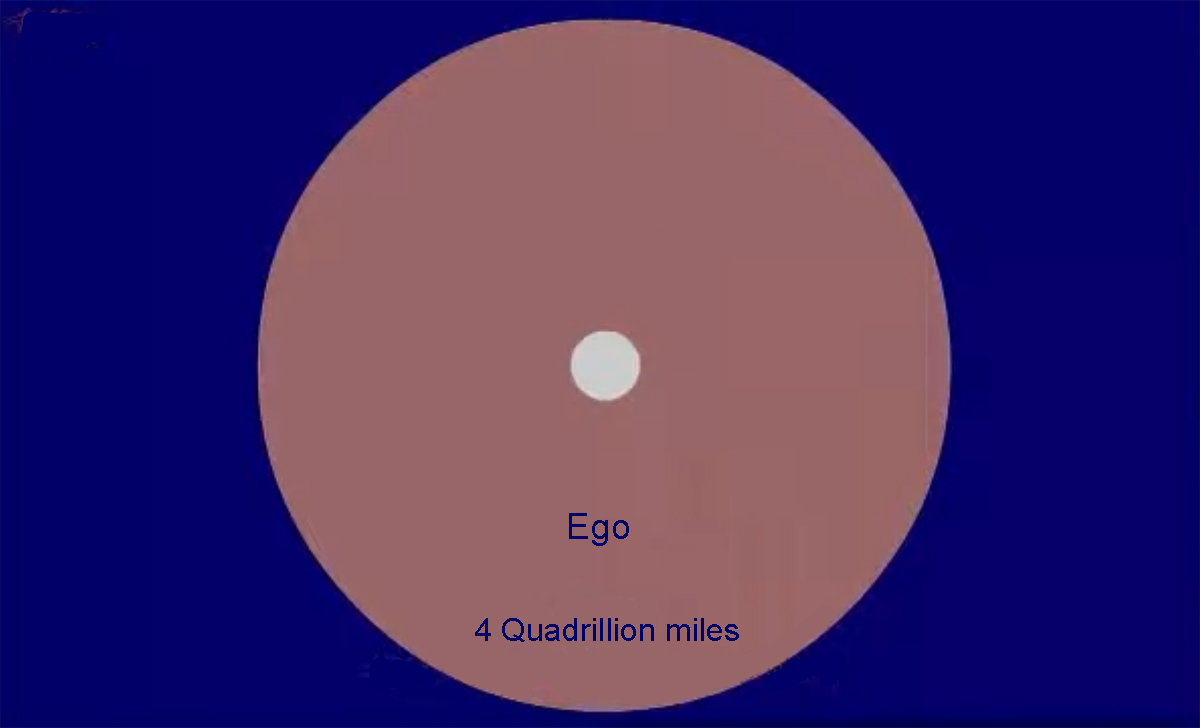
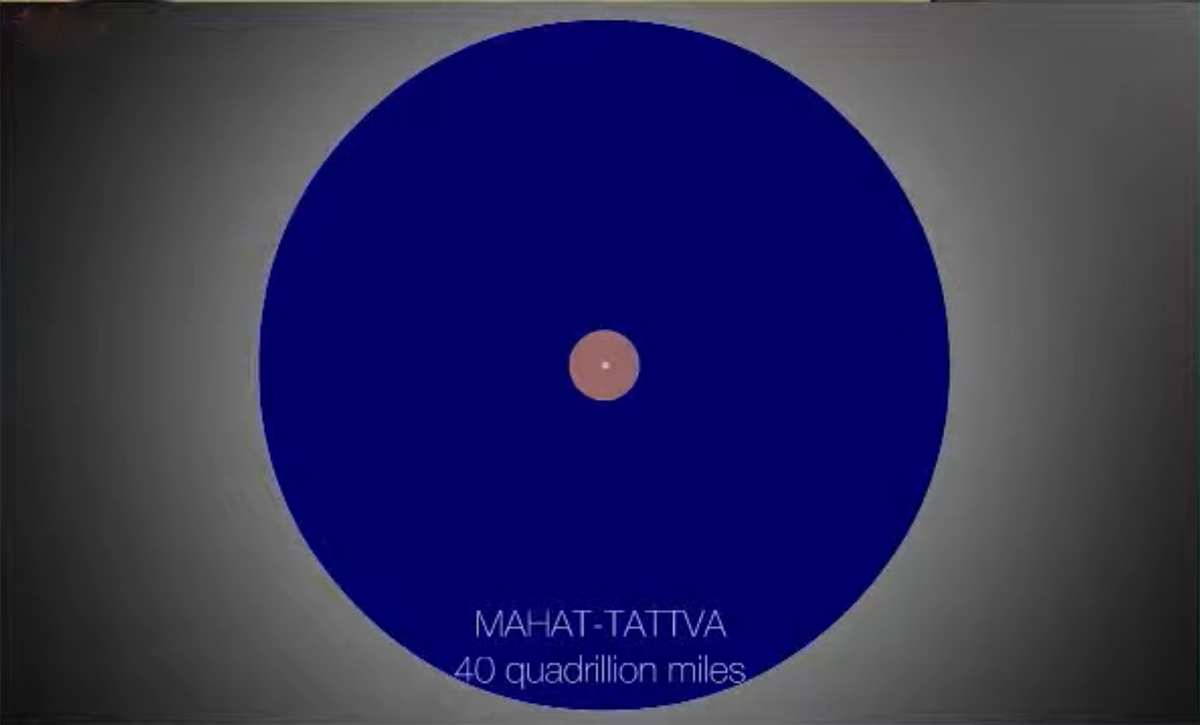
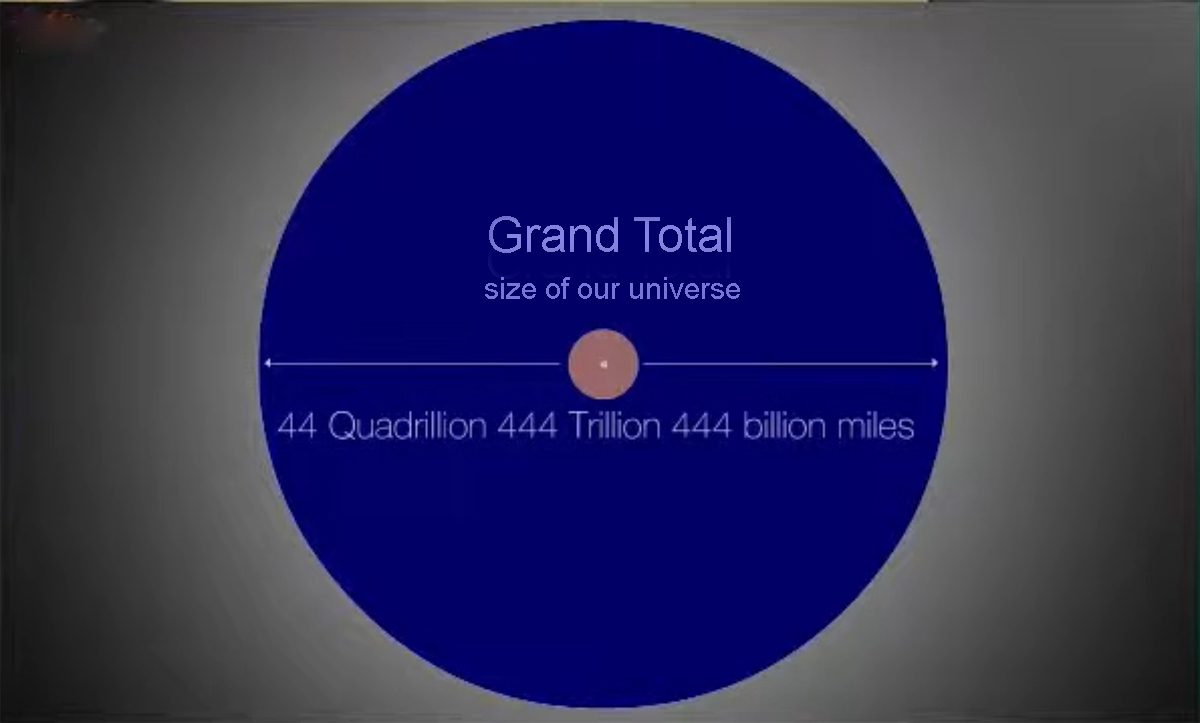
|
Our universe is but one of an ever growing-infinite number in the causal ocean.
|
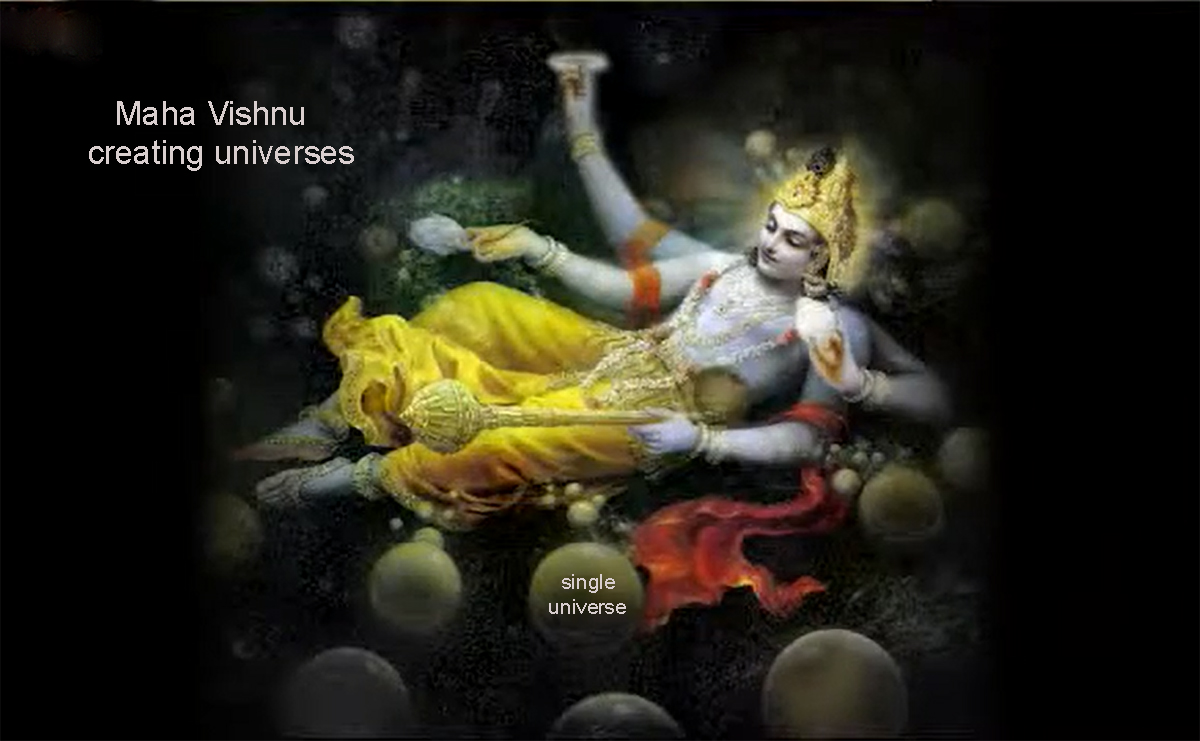
back to table
back to home
|

















